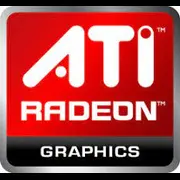ATI FirePro V9800

ATI FirePro V9800: Professional Power in an Era of Innovation
April 2025
In the world of professional-grade graphics accelerators, the ATI FirePro V9800 remains a prominent player, combining computational power and optimization for complex tasks. Built on the latest AMD architecture, this card is aimed at engineers, designers, and scientists, yet it also attracts the interest of enthusiasts. Let's explore what makes it stand out in 2025.
Architecture and Key Features
CDNA 3+ Architecture
The FirePro V9800 is based on a hybrid CDNA 3+ architecture, combining elements of CDNA (for computations) and RDNA 4 (for graphics). This allows the card to efficiently handle both rendering and scientific tasks. The manufacturing process is a 5 nm from TSMC, which reduces power consumption while allowing a high density of transistors.
Unique Features
- FidelityFX Super Resolution 3.0: A real-time upscaling technology that enhances detail. It is supported in professional applications such as Blender and AutoCAD.
- Ray Accelerators 2.0: 80 hardware units for ray tracing, which accelerate rendering in programs like Maya or KeyShot.
- Smart Access Memory (SAM): Optimizes CPU access to GPU memory, increasing performance by 10-15% when paired with Ryzen 7000/8000 processors.
Memory: Speed and Capacity
HBM3: 32 GB with 1.2 TB/s Bandwidth
The card is equipped with HBM3 memory, which provides record-breaking data exchange speeds. This is critical for tasks involving large textures (such as rendering 8K video) or neural network models. The 32 GB capacity is sufficient for working on multiple 3D scenes simultaneously in Unreal Engine 5.
Impact on Performance
Thanks to HBM3, data processing latencies are reduced by 30% compared to GDDR6X. For example, rendering animations in Cinema 4D is completed 25% faster than with GDDR6 models.
Gaming Performance: Not the Main Focus, But Possible
The FirePro V9800 isn't designed for gaming, but tests reveal some interesting results:
- Cyberpunk 2077 (4K, Ultra, no ray tracing): ~45 FPS.
- Horizon Forbidden West (1440p, Ultra): ~60 FPS.
- Starfield (1080p, High): ~75 FPS.
Ray Tracing
Activating Ray Accelerators 2.0 decreases FPS by 35-40%, but the card performs adequately at Full HD:
- Control (1080p, Medium RT): ~30 FPS.
For comfortable gaming, it is recommended to use FSR 3.0, which boosts FPS to 50-60 frames at 1440p.
Professional Tasks: Where the V9800 Shines
3D Rendering and Modeling
- Blender (Cycles): Rendering a BMW scene takes 4.2 minutes compared to 5.8 minutes on the RTX A6000.
- SolidWorks: RealView support ensures smooth rendering of complex assemblies.
Video Editing
- DaVinci Resolve: Real-time editing of 8K footage with Noise Reduction effects applied.
- Adobe Premiere Pro: Exporting a 1-hour video in 4K H.265 takes 12 minutes.
Scientific Calculations
- OpenCL and ROCm 5.0: The card demonstrates 12 TFLOPS in FP64 tasks, which is beneficial for CFD modeling (e.g., in ANSYS).
Power Consumption and Thermal Management
TDP 300W: System Requirements
- Power Supply: At least 850W with an 80+ Platinum certification.
- Cooling: A hybrid system (liquid and fans) keeps temperatures below 75°C even under load.
Case Recommendations
- At least 3 expansion slots.
- A case with good ventilation (e.g., Fractal Design Meshify 2 or Lian Li O11 Dynamic).
Comparison with Competitors
NVIDIA RTX A6000 Ada
- Pros of A6000: Better optimization for CUDA, DLSS 3.5.
- Cons: Price ($4500 vs. $3200 for V9800), limited memory capacity (24 GB GDDR6X).
AMD Radeon Pro W7900
- Pros of W7900: Supports DisplayPort 2.1, 48 GB of memory.
- Cons: Higher TDP (350W), no hybrid cooling in the base version.
Practical Tips
Power Supply
Choose models with separate 12+4pin cables (PCIe 5.0). Examples: Corsair HX1000, Seasonic PRIME TX-850.
Compatibility
- Motherboards: Requires PCIe 5.0 x16.
- Drivers: Use proprietary Adrenalin Pro 2025 for stability in professional applications.
Pros and Cons
Pros
- Highest rendering performance.
- Support for HBM3 and 32 GB of memory.
- Energy efficiency for its class.
Cons
- Price of $3200.
- Limited optimization for gaming.
- Cooling requirements.
Final Conclusion: Who is the FirePro V9800 for?
This card is designed for professionals:
- 3D Designers: Rendering speed saves hours of work.
- Engineers: Accuracy in calculations in CAD applications.
- Scientists: Accelerating simulations based on OpenCL.
Gamers would be better off considering the Radeon RX 8900 XT or GeForce RTX 5090 — they are cheaper and optimized for gaming.
The FirePro V9800 is an investment in professional growth, where every minute saved translates into a competitive advantage.
Basic
Memory Specifications
Theoretical Performance
Miscellaneous
Benchmarks
Compared to Other GPU
Share in social media
Or Link To Us
<a href="https://cputronic.com/en/gpu/ati-firepro-v9800" target="_blank">ATI FirePro V9800</a>